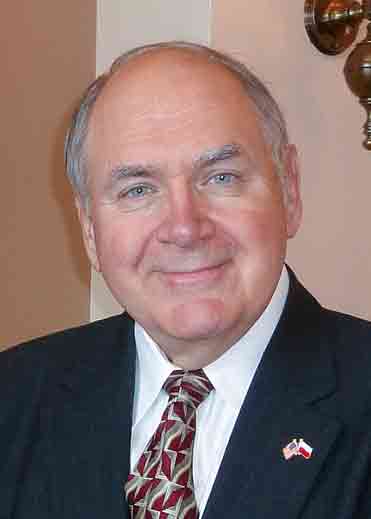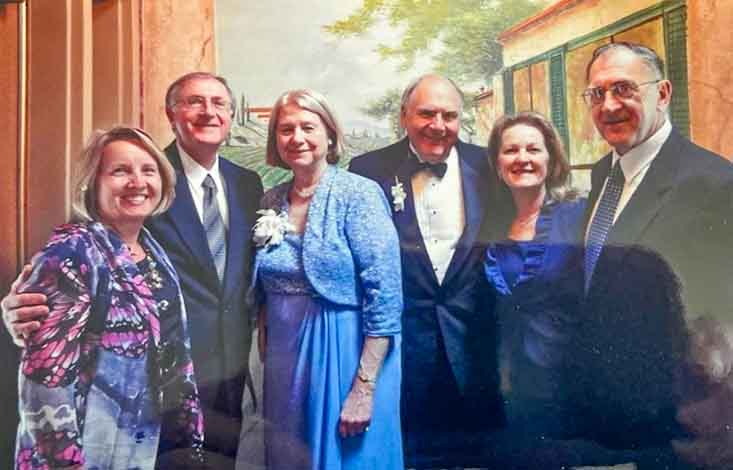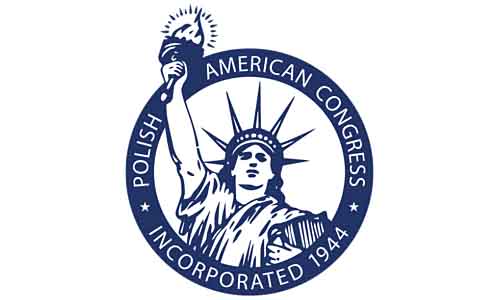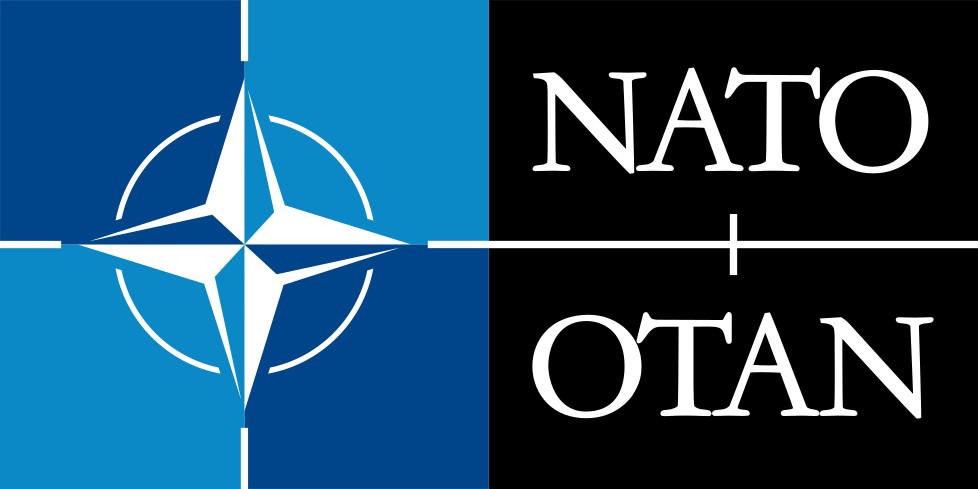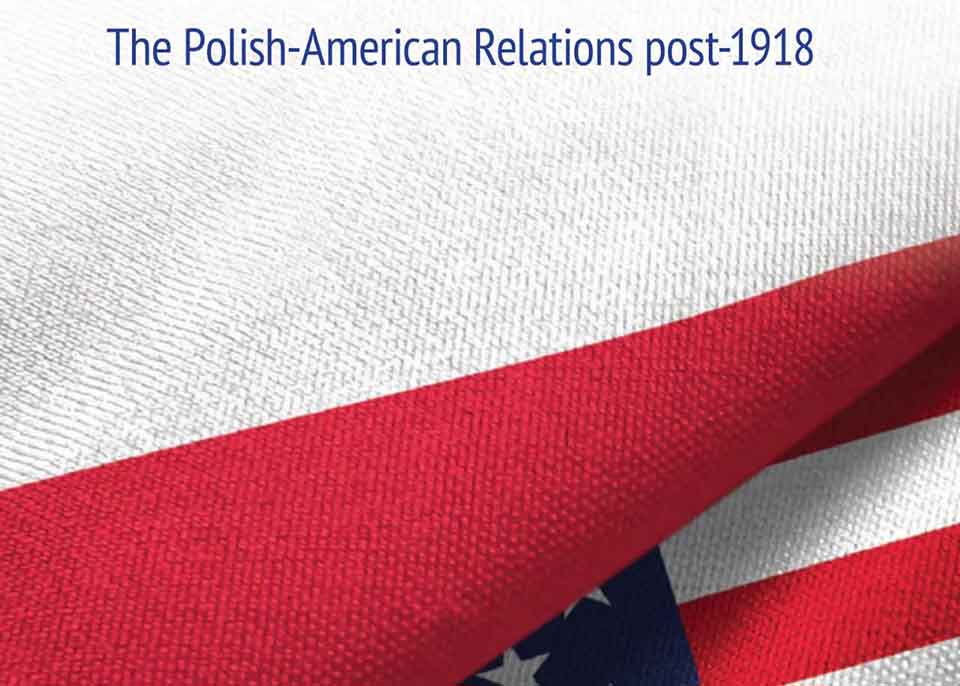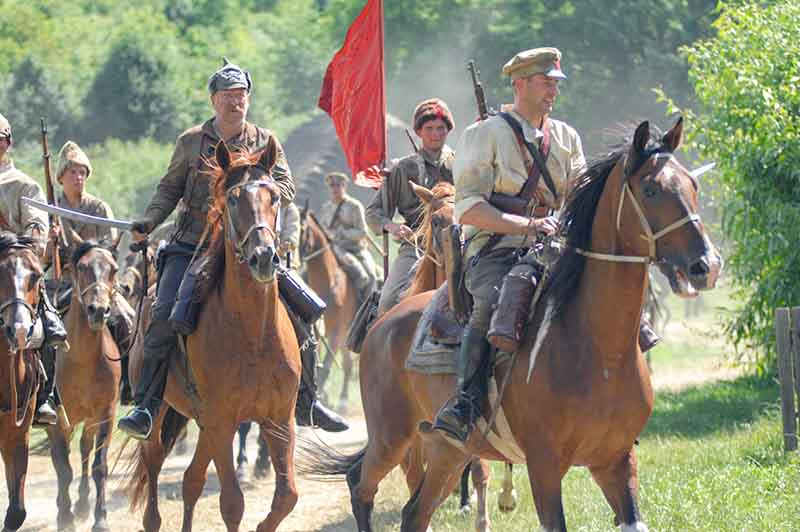This text was prepared for presentation at the international conference of Polish Academy of Sciences at the Jagiellonian University in Krakow, November 23-24, 2023.
The story of Poland's diaspora and its integral connection with Poland goes back to the 19th century. It began with the emigration of Poles from their partitioned homeland after the suppression of the "November Insurrection" in 1831. Most who settled in France sought to win that government's support for a Poland restored to independent statehood. A similar emigration was active after the "January Insurrection" of 1863 was crushed.
Far, far larger in sheer numbers was the emigration "for bread," in the words of Henryk Sienkiewicz. Its members were driven to seek work and a better life abroad which they could not achieve in oppressd, partitioned Poland.
At first — the "for bread" emigration was seasonal — to western Europe. From the 1850s emigrants began making the risky voyage across the Atlantic Ocean to Canada, Brazil, and — most of all — to the United States of America. Most chose to remain there permanently.
Wherever Poles relocated in large numbers they established communities based on language and religion. "Polonia" became the name for these communities.
The immigrants to the United States came in three distinctive waves. The first was between 1854 and 1914, the second from 1945 into the 1960s and the third from the late 1970s to the mid 1990s.
Their numbers are an important part of the story. When America's Civil War ended in 1865 only 30,000 Poles were in the country — just one tenth of one percent of its population. When World War I began in 1914, the number of Polish immigrants and their American born offspring had mushroomed to four million in all, four percent of the population. (as reported by Andrzej Brozek, Polonia Amerykanska, 1854-1939, Warsaw: 1982)
In 1914, just 10 percent of Polonia's members were citizens with the right to vote. This fact and their Polish language dependence limited their ability to influence on United States officials on matters of concern to them, like immigration policy.
By the time of the Second World War (1939-1945), the American Polonia had grown to about six million, despite restrictions on immigration. This Polonia differed from the Polonia of the World War I era. Its members were mostly American born. They, together with the ageing pre World war I immigration, were U.S. citizens with the right to vote.
The American Polonia would be greatly affected after World War II due to the entry of several hundred thousand newcomers who had grown up in independent interwar Poland. Their national consciousness and Polish language proficiency invigorated the "old" Polonia of the time (as discussed by Anna Jaroszynska-Kirchmann, The Exile Mission: The Polish Political Diaspora and Polish Americans, 1945-1956, Athens, Ohio, 2004).
From the late 1970s into the mid 1990s came a third wave of Polish immigrants. They left communist-run Poland out of dissatisfaction with the country's worsening economic conditions and the regime's failed rule. Along with the members of the post World War II emigration and the descendants of the "old" pre World War I immigrations, they combined to make up a Polonia estimated roughly at about 10 million members. (Dominik Stecula, Polish Americans Today, Detroit, 2021; and Thaddeus Radzilowski, 2010; along with the American Community Surveys periodically compiled by the U.S. Bureau of the Census).
How connected with Poland were — and are — the members of these emigrations, along with their American born offspring and descendants? And what what accounts for this connection? The usual answer has to do with ties of family and culture. Here, I argue that this connection has a lot to do with Poland's geographical predicament and concern rooted in its chronic border problems.
The first wave of immigrants who came to make up the American Polonia arrived from a Poland under foreign rule — a Poland whose borders had been erased by its occupiers (see the 1914 map below).
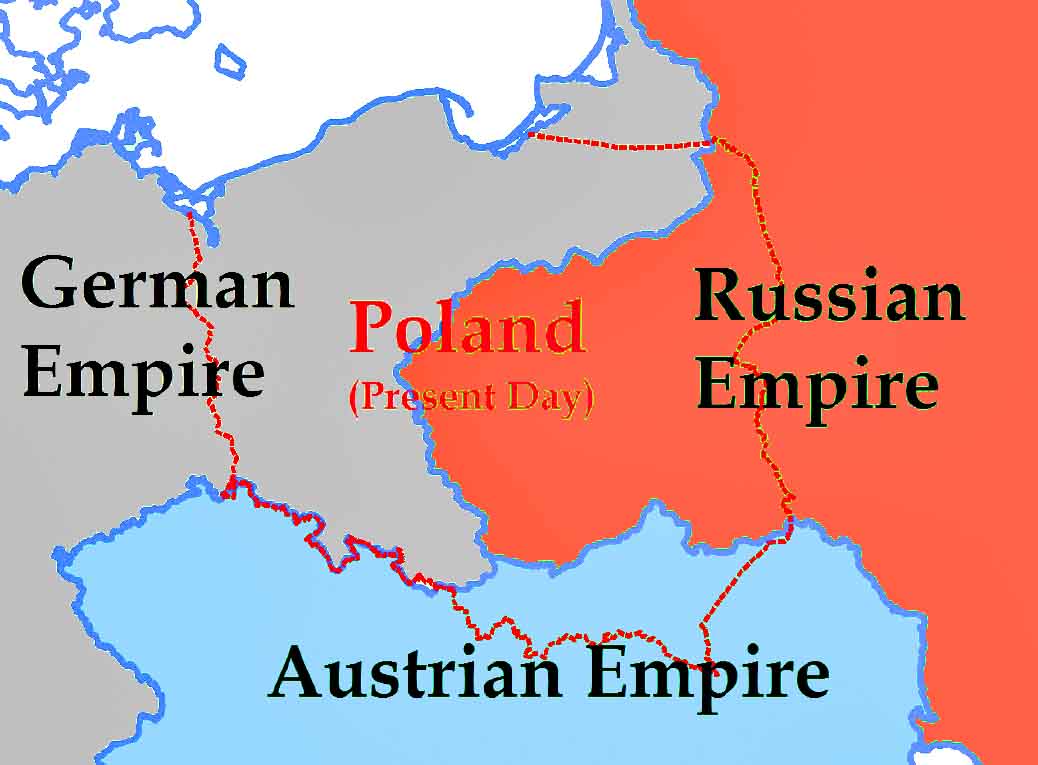
Imperial Partition of Poland (1815-1914) (Source: ResearchGate.net)
But most did not forget their homeland and expressed their concern by keeping in touch with family and friends as best they could — by letter writing and by sending home money and goods. This aid was extraordinary — in the hundreds of millions of dollars. It is even more amazing due to the fact that the wages of most immigrants were very low and they had families to maintain besides (noted in Donald Pienkos, PNA: A Centennial History of the Polish National Alliance, New York, 1984).
Moreover, within this "for bread" immigration were a good number of educated and patriotically minded activists — secular and religious. It was they who organized the many Polonia institutions and societies aimed at improving the lives of the immigrants and their families.
How substantial was their achievement?
By 1914, the Polonia counted some 800 churches, parish schools and other related religious institutions.
In addition they founded more than twenty fraternal benefit and insurance societies, most notably the Związek Narodowy Polski (Polish National Alliance), Zjednoczenie Polskie Rzymsko-Katolickie (Polish Roman Catholic Union), Związek Polek (Polish Women's Alliance) and Sokolstwo Polskie (Polish Falcons). Together these leadership organizations already had over 250,000 adult members. By then the Polonia was also served by dozens of widely read daily and weekly newspapers, along with several publishing houses.
Too, the civic efforts in the Polonia included the erection of monuments to honor the Polish and American Revolutionary war heroes, Tadeusz Kosciuszko and Kazimierz Pulaski, plus the celebration of the Polish Constitution of 1791. All affirmed the immigrants' ties to Poland while underscoring Polonia's identification with values its members shared with other Americans. (These countless and extraordinary efforts are documented by Ewa Barczyk, in her Footprints of Polonia, New York, 2022.)
Polonia activists in America also worked with Poles in the exile communities in western Europe and in partitioned homeland. The latter in particular organized political movements from the 1880s aimed at regaining Polish independence — most notably the National Democrats and the Socialists.
The culmination of these early efforts came in May 1910 with a great Polish National Congress in Washington, DC, the capital of the United States. Held to coincide with the dedication of the monuments to Pulaski and Kosciuszko, it affirmed Poland's right to independence.
When World War I came in 1914, American Polonia leaders created national federations like the Polish National Department (Wydzial Narodowy) to support the independence cause. They backed the successful efforts of the Patriot-Pianist Ignacy Paderewski to gain President Woodrow Wilson's support for an independent postwar Poland. Moreover, some 20,000 Poles in America joined the 100,000-man Polish army in France that went on to fight in Poland to establish its new postwar borders. And at another great Polonia congress held in Detroit in September 1918, the delegates resolved to raise $200 million in aid to a free Poland once the War was won.
With independence proclaimed in November 1918 and Poland's borders established in March 1921, the story of the Poland of the partitions period — the Poland of the first mass migrations — seemingly came to an end. But had it?
The new Polish Second Republic faced a host of monumental problems. Most severe was its dealings with the great powers on its borders. To the east was Lenin's expansionist Soviet Russia. To the north and west was the German state, still potent despite its defeat in World War I.
In September 1939, Poland, a state with indefensible borders, was attacked and crushed by Nazi Germany and the Soviet Union (see 1939-45 map below).
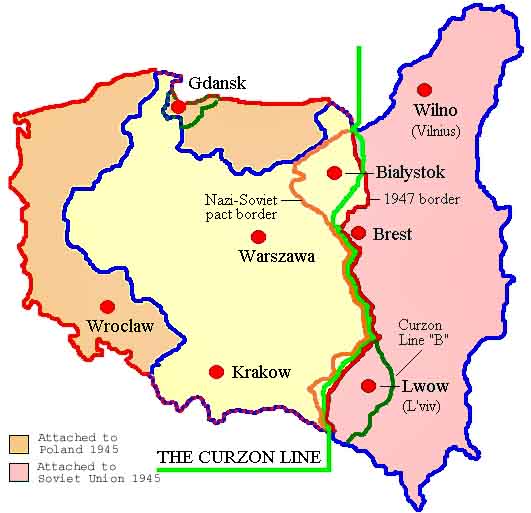
Poland 1939-1945 (Source: Wikipedia)
In World War II, activists in the American Polonia again responded to Poland's plight by creating two great organizations. The first, the Polish American Council (Rada Polonii Amerykanskiej), shipped food packages, clothing, and medical goods valued in the hundreds of millions of dollars to refugees, soldiers, and prisoners of war.
In 1944, they created a second organization, the Polish American Congress (PAC, Kongres Polonii Amerykańskiej, KPA) to support an independent postwar Poland. After the War, the PAC relentlessly lobbied the U.S. government for a free Poland liberated from Soviet domination and pushed for U.S. approval of Poland's postwar borders — something recognized at last in 1975 (see post-war map below).
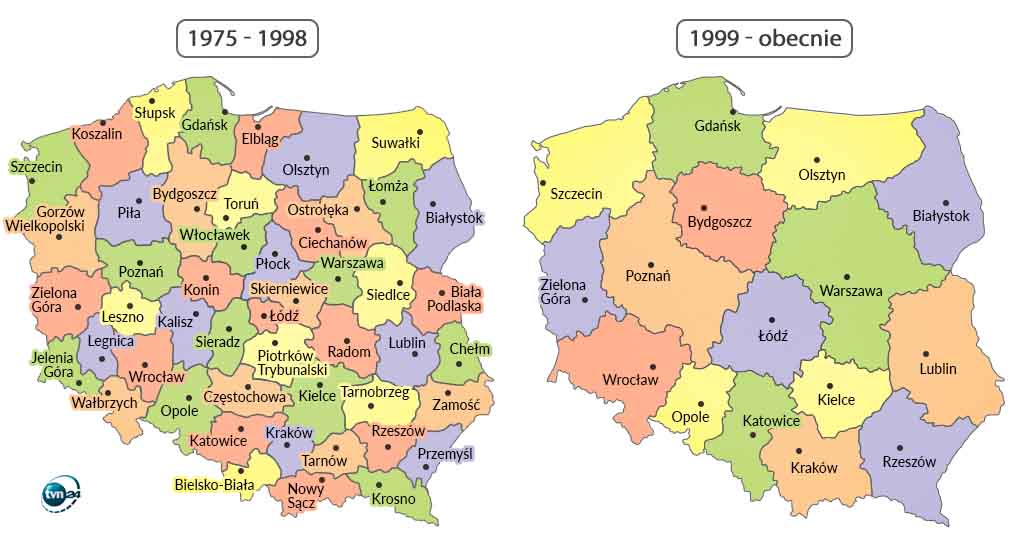
Administrative regions of Poland after 1975 (Source: Reddit)
In the 1980s, in cooperation with Pope John Paul II and the Catholic Church in Poland, the Congress' Charitable Foundation, the successor of the Polish American Council, shipped badly needed medical supplies valued at more than 200 million dollars to a Poland enduring martial law and economic depression. However, this sum was but a small fraction of the aid — estimated at $600 million a year — sent privately by Polish Americans (cited in the Polish American Journal, in a 1985 article).
After 1989, the Polish American Congress and Polonia, which had supported the Solidarity movement from its birth in 1980, welcomed its election victory over the failed communist regime and the establishment of the Third Republic of Poland. (Donald Pienkos, For Your Freedom Through Ours: Polish American Efforts on Poland's Behalf, 1863-1991, New York, 1991).
It backed the U.S. Government's passage of the Support East European Democracy (SEED) Act and the Polish American Enterprise Fund — to aid Poland's transition away from its failed state socialist economy.
Perhaps most important, it defended Poland's western and northern borders and lobbied the United States government to back Poland's entry into the NATO alliance. Indeed, when NATO expansion was approved 80-19 by the U.S. Senate in 1998, 26 of the 28 Senators from the fourteen states with the largest Polish American populations voted for Poland's entry, into the Alliance. (Donald Pienkos, "Witness to History: Polish Americans and NATO Expansion", The Polish Review, Fall 1999).
With NATO membership, Poland's territorial integrity had won stronger international support than ever before (see the map of NATO, below).
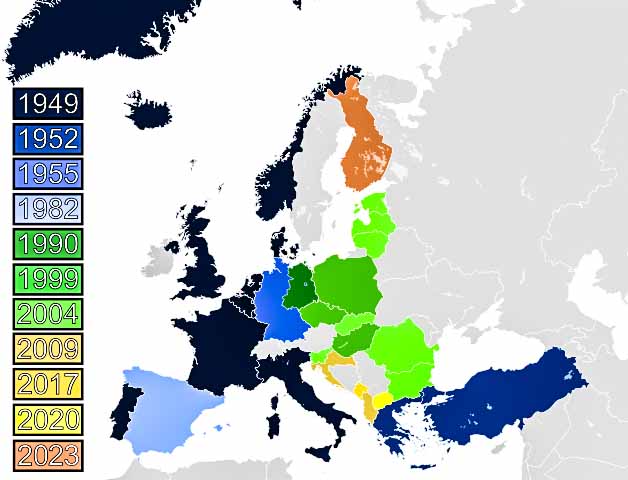
History of NATO expansion (Source: Wikipedia)
Yes, American Polonia has itself changed considerably over time. Before 1920, it was essentially a foreign born, Polish language speaking Polonia, composed mainly of urban laborers, few of them U.S. citizens. By the mid 1940s Polonia was increasingly made up of the American born sons and daughters of the immigrants, many of them bilingual.
Since the 1980s, just 5 percent of the 10 to 12 million Americans of Polish heritage was foreign born, few were conversant in Polish, most were of only partly Polish origins due to intermarriage. By this time, most had moved out of the working class and held managerial, professional and white collar positions, had college degrees, and were far above the national median in income. Indeed, this story of the waves of immigration, their organizations, and their individual advancement, along with their full integration into the "mainstreams of American life," is well presented in the extraordinary Polish American Encyclopedia (2011) supervised by James Pula.
So far my look at the story of Poland and its American diaspora has focused on the ties that link them. One is the cultural relationship between Poland and Polonia as defined by shared language, historical memory and a recognition of Poland's "greats" of the past — Kosciuszko and Pulaski, Paderewski, Pope John Paul II, and the men and women of the Solidarity movement, to name just a few of Poland's many universally respected figures. The second is the tie of family and of family traditions and practices.
But there is a third tie, a tie that is far too little appreciated, that binds across the generations — it is the tie based on the awareness among Polonia members of Poland's tragic history — of borders invaded, human suffering, and heroism. In the time of the partitions — it caused millions to leave their homeland but also led to their efforts — before, during and after World War I — to support an independent Poland. During World War II, Poland's destruction drove the Polonia to work on behalf of its people and for a Poland restored to freedom once the War was won. Most recently, it is the story of Poland's new-found security as part of the NATO alliance, a security Poland has never before possessed, and which has been won with the concerted help of the diaspora.
This third tie is something for the leaders of Poland to give careful thought to, and to nurture. Poland's border situation has always mattered and it matters today. And the Polonia — yes, Polonia — can still make a difference.



